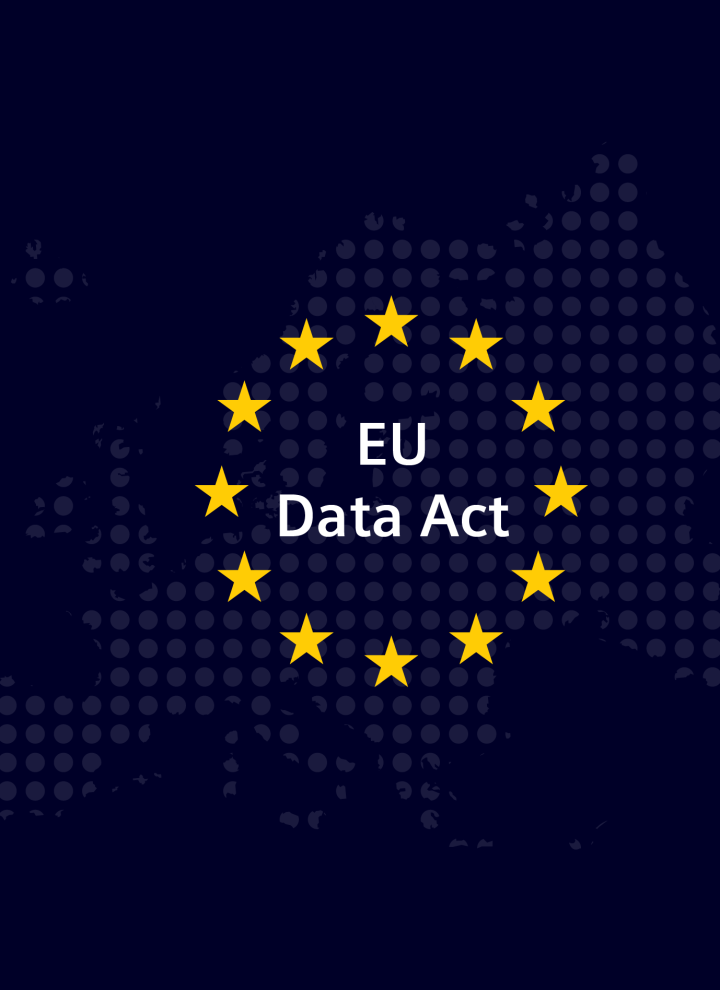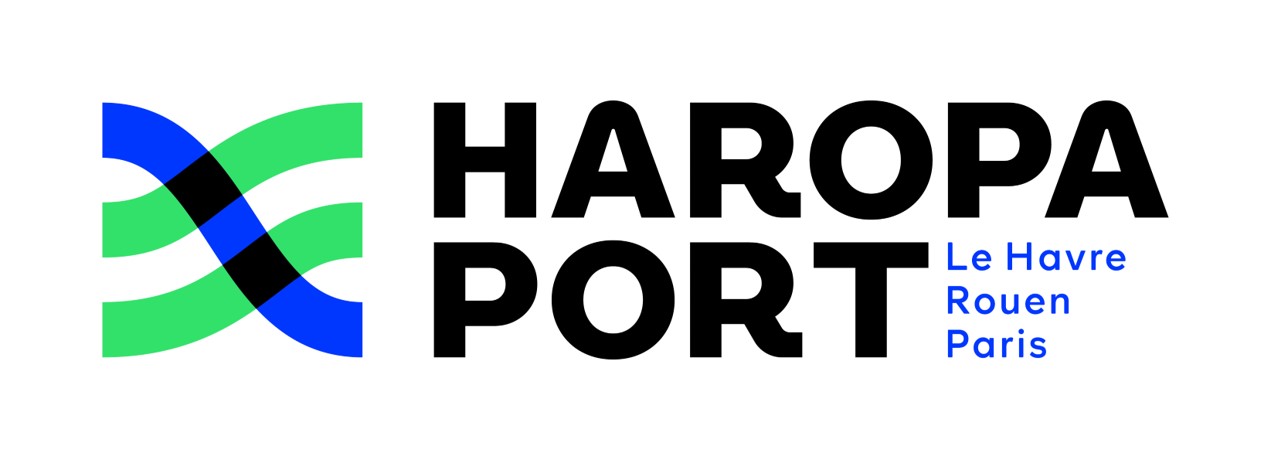Navigate the Impact of Tariffs on your Supply Chain

Navigate the Impact of Tariffs on your Supply Chain
Tariffs and global supply chains are more interconnected than ever. Organizations face heightened risks, rising costs, and operational complexity as trade tensions and regulatory shifts continue – especially following US-China tariffs and retaliatory measures.
How tariffs affect supply chains – and how to stay resilient
The impact of tariffs extends far beyond added import duties. They influence sourcing strategies, supplier relationships, production timelines, logistics networks, and customer pricing models.
To manage these dynamics effectively, Siemens Advanta’s Supply Chain Tariffs Analytics Solution helps organizations to:
- Model real-time scenarios to assess the impact of tariffs on logistics, costs, and supply continuity
- Analyze root causes at part level to identify vulnerabilities and evaluate dual sourcing opportunities
- Shift perspectives between revenue and spend to better engage customers and suppliers with actionable insights
From disruption to strategy: leveraging supply chain shifts as opportunity
Tariff-related disruptions are no longer isolated events – they’ve become a recurring feature of global trade. To remain competitive, organizations must respond quickly and strategically to changing trade policies and supply chain impacts. This requires a shift from reactive mitigation to active opportunity management.
Turning disruption into advantage means understanding where volatility can open doors: for example, by optimizing production footprints, securing more flexible sourcing models, or rethinking logistics strategies with a long-term view.
How Siemens Advanta helps you build resilience and agility
To support organizations in navigating these challenges, Siemens Advanta provides tailored solutions across multiple dimensions of supply chain strategy. Siemens Advanta supports your organization through:
- Supply chain optimization: improve efficiency by up to 30% and reduce lead times by 40% through nearshoring, real-time tracking, and automation.
- Market diversification: leverage tariff engineering and supplier shifts to reduce expenses by 10–25%.
- Innovation and cost reduction: boost productivity by up to 50% and lower compliance costs with AI-powered analytics.
- Strategic partnerships: recover up to 99% of duties paid via duty drawback programs and free trade zones.
Strategic tariff mitigation: more than cost savings
Mitigating the effects of tariffs isn't just about protecting margins—it's about building long-term resilience. Siemens Advanta’s approach combines technology, analytics, and industry expertise to:
- Identify cost-saving alternatives
- Collaborate with key suppliers using proprietary cost insights
- Support make-buy decisions and product redesign evaluations
Stay ahead of tariff impacts on your supply chain
In a volatile global trade environment, proactive planning is critical. Siemens Advanta’s innovative solution enables businesses to mitigate risks, enhance supply chain resilience, and drive sustainable growth.
Contact us today to learn how we can help you adapt to supply chain tariffs and thrive in the face of uncertainty.
Industry Experts


Plant Maturity Assessment

Factory Maturity Assessment to increase your operational performance
Enroll in a comprehensive factory maturity assessment by filling out our form. This assessment covers key areas such as manufacturing execution & process automation, supply chain, people & culture, and cybersecurity & operations. Gain transparency on your digitalization potentials and receive a tailored roadmap to enhance your performance.
Start your journey towards operational excellence today!
Our industry leader

Cyber Resilience Act | Whitepaper

Cyber Resilience Act
Strengthen Your Cyber Defenses with the Cyber Resilience Act
At Siemens Advanta, we are dedicated to empowering your organization to navigate the complexities of the Cyber Resilience Act (CRA) with confidence. Our expertise in integrating cybersecurity measures ensures that you are well-equipped to protect your digital landscape.
Integrating risk management with advanced cybersecurity measures
The Cyber Resilience Act is a groundbreaking initiative that underscores the importance of cybersecurity and compliance in today’s interconnected world. It closely aligns with established frameworks such as GDPR and NIS2, providing a robust structure for digital product protection.
Our whitepaper provides a deep dive into the essential components of the CRA, highlighting the importance of integrating risk management and risk handling practices within your organization. As compliance becomes a top priority, learn how our specialized risk management services can protect your digital assets.
At Siemens Advanta, we focus on enhancing your cybersecurity and data protection efforts by guiding you towards compliance with the Cyber Resilience Act. By implementing effective risk management and network security measures, we ensure that your products and practices meet the new standards while strengthening your overall cyber resilience strategy. Embrace this opportunity to protect against threats and vulnerabilities and secure your future with our expert risk management services.
For more information, read our whitepaper on the Cyber Resilience Act.
Our industry leader

Cyber Resilience Act

Cyber Resilience Act
Product Cybersecurity Revolution – “Security by Design”
Siemens Advanta helps its clients comply with the Cyber Resilience Act by integrating Secure-by-Design principle into product development.
Siemens Advanta makes sure clients are successful in acquiring “CE Marking” and comply with the Cyber Resilience Act by integrating Secure-by-Design principles, tailoring security measures based on product criticality, and conducting risk assessments at every development stage. Siemens Advanta's proactive approach strengthens compliance and boosts its client's customer trust and market competitiveness with its secure and reliable products.
- Cyber risk assessment to identify critical risk areas and provide mitigation action items
- Product Security Program setup with appropriate levels of governance and risk-based security controls
- Proposal for post market surveillance process and team
- Provision of an outside view and cornerstone for optimization of building a secure product
- Proven approaches to develop and implement Product Security, ensuring cross-border transparency and compliance – with up to 30% less time and effort
- Reusable blueprints and trainings for further scaling within an organization
- Identify critical products containing digital elements
- Identify key stakeholders from senior management, business representatives, IT organization, manufacturing operations, and human resources
Our industry leader

Mergers & Acquisitions (services)

Mergers and Acquisitions
M&A can transform your business, but it requires expertise throughout the process, starting in the pre-deal phase, continuing in the transaction phase, and through post-merger integration (PMI). M&A activities are often driven by a desire to increase market share, expand product lines, or gain access to new markets. Successful M&A transactions require careful planning, due diligence, and effective execution to achieve desired outcomes and create value for stakeholders - something we have proven time and again at Siemens Advanta.
- Identify the appropriate M&A prospect
- Evaluate the advantages and disadvantages of a possible acquisition
- Develop the integration plan, discover potential synergies, and guarantee preparedness from Day 1
- Achieve faster growth
- Facilitate the transfer of technology
- Accomplish diversification
- Attain positive synergy
- Increase market power
Our industry leader

Compliance with EU Data Act

Compliance with EU Data Act
EU Data Act: Prepare for New Regulations
To foster the data economy in the European Union, EU legislators are currently reshaping business ground with new laws that shall enable fair and simple access to and use of data. The latest legislation: the EU Data Act, will become effective in September 2025.
With this deadline on the horizon, manufacturers of connected devices and others are required to act now. The timeline is tight, the obligations and requirements are ambiguous and fundamental business questions need to be clarified.
What is EU Data Act?
One important aspect of the EU Data Act is to grant users of connected products the right to access the generated machine data. In addition, the Data Act allows users to grant access to that data to third parties, which may be, for instance, independent service providers, AI startups and potentially also competitors.
Users and third parties may use the data for their own purposes, including providing third party service (as an alternative to manufacturer provided services) or analytics offers.
Manufacturers that fail to provide data access risk facing substantial financial penalties. The penalties shall be effective, proportionate and dissuasive and may have retroactive effect; if personal data is concerned, fines shall be according to the GDPR, which means the higher of EUR 20 million or 4% of the annual global revenue.
What is required and when?
Beside other obligations, manufacturers of connected products need to fulfill three key obligations by two deadlines.
- Information obligation
Starting from September 2025, manufacturers of connected products are required to inform users at point of sales about the data that the connected product generates during usage.
- Data sharing obligation
Starting from September 2025, the data holder (usually the manufacturer, if it chooses to collect the machine data) is required to share available data with the user of the connected product as well as with third parties authorized by the user.
- Design obligation
One year later, starting from September 2026, manufacturers must design new products in a way that the data is directly accessible to the user.
What do these obligations imply? Companies that sell connected products need to react now and start designing and implementing response strategies for sharing the relevant data. Yet, as is often the case, the details are where the real challenges lie.
Who does the law apply to?
The above-mentioned obligations under the EU Data Act apply to all manufacturers of connected products that make their products available in the EU, irrespective of their industry and place of establishment.
The right to access data is restricted to users within the EU. Third parties that were granted access by users must have a legal representation in the EU to be eligible for data access.
How can you become compliant?
The path to compliance is individual for each company, yet there are four key tips, from our experience, to make the journey a smoother one.
- Setting up a cross-functional team
Due to the complexity of this topic, different functions and experts from within the clients’ organization and from external need to be mobilized, including legal, government affairs, R&D, product management and IT. It is advised to involve all experts and concerned business units from day 1 to form a joint response strategy moving forward.
- 80/20 and risk-based approach
The Data Act applies not only to new products, but also to the existing installed base in many cases. Companies with a large variety of product families need to carefully plan their approach to balance the need of being compliant and the effort to implement.
- Close collaboration between legal and technology experts
Companies usually need to develop a new technical solution to fulfill the obligations under the Data Act. It is neither a pure technical nor an entire legal decision. Technical feasibility/effort and legal compliance risks need to be evaluated jointly to come up with an optimal solution. In addition, sales and customer service teams need to be involved as well to ensure a smooth customer experience.
- Treat this as a business opportunity rather than a pure compliance burden
Despite being a compliance topic from the first glance, the EU Data Act also provides vast opportunities for companies to capture. Creating new revenue streams of providing data, offering third party maintenance services for other companies’ products, or conducting AI analytics on competitors’ machine data, the opportunities seem endless.
How can Siemens Advanta help?
With our footprint in various industries and specifically our experience with the EU Data Act, we can support our clients on their way to become compliant with the obligations. Our project management services span from hands-on project management office support for urgent content issues, to developing comprehensive data strategies designed to meet future digital challenges. Siemens Advanta tailors its offerings and strategies to align with the unique needs and stages of development in areas, e.g. system architecture and data literacy, ensuring that our services are well-suited to each client's specific circumstances and objectives.
If you want to learn more about our offerings regarding the EU Data Act, please download the detailed presentation on the topic here:
Industry experts




Disclaimer
The information provided herein is for general informational and promotional purposes only and may not be accurate, complete or up to date. The information does not constitute any regulatory, legal, financial, technical or other professional advice.
No responsibility or liability will be accepted for any errors, omissions or inaccuracies in the content. Siemens Advanta disclaims, to the fullest extent permitted by applicable law, any and all liability or responsibility for the accuracy and completeness of the information contained herein and for any acts or omissions made based on such information. Siemens Advanta does not provide any legal, regulatory, audit, or tax advice; readers are responsible for obtaining such advice from their own legal counsel or other licensed professionals.
Ports

Paving the Path for Tomorrow’s Ports
Witness the Smart and Sustainable Evolution in the Maritime Industry
Navigating operational challenges in a changing landscape
Port and terminal operators are facing increasing challenges which impact day-to-day operations and productivity. In addition to commercial losses due to unplanned downtime and infrastructural damage, Black Swan events and cyber security threats can also affect the ability to attract and retain customers in a competitive market. While consumer reliance on port and terminal services steadily increases, changes to trade policy and customs procedures can cause processing delays and disrupt supply chains. Meanwhile, port and terminal operators are under swift time limits to adopt sustainable practices and comply with new climate and resource regulations.
Convergence of IT and OT
Combining information technology (IT) with operational technology (OT) enables a port to connect, and analyze information and operations, increase transparency and access and leverage data across the product and production lifecycle and throughout the supply chain ecosystem.
By converging IT and OT, data can flow starting vertically from field devices and sensors to edge computing and the cloud. Applying IT and software development methodologies to the OT world and collecting, contextualizing, and leveraging OT data with IT mechanisms makes smart, secure, and sustainable ports a reality.
Empowering your unique transformation every step of the way through our collaborative approach:
Siemens Advanta provides comprehensive digital transformation services combining IT+OT and special custom solutions that leverage the full potential of data by applying industrial-grade trustworthy, robust, and cyber secure technologies for critical infrastructure optimization.
We assist our customers in realizing successful digital transformation through targeted use cases in the following areas:
- Reducing carbon emissions, waste, and pollutants with real-time and historical environment data
- Detecting potential hazards at an early stage and control physical and digital access
- Safeguarding data and systems against cyber threats
- Interconnected Systems: Expanding functionalities and operational efficiency through seamless integration of the existing IT infrastructure
- Monitoring health and status of critical port and terminal infrastructure and optimize asset management and preventative maintenance
- Coordinating and automate workflows from ship arrival to cargo destinations
- Centralizing communication systems across all port systems to improve port management and supply chain operations
At Siemens Advanta, we believe in a people-focused and collaborative approach to client partnerships, utilizing our extensive domain and technology expertise to deliver solutions uniquely tailored to your business needs. Our five-step process ensures that we work closely with your team to build the perfect solution, all within a transparent pricing model.
- Step 1: Problem Discovery and Target Setting
We begin by identifying and defining aligned and detailed objectives to ensure we fully understand your needs.
- Step 2: Prototyping
Next, we create a prototype designed specifically to meet your business requirements.
- Step 3: Proof of Value
We then demonstrate the real impact of the solution to validate its effectiveness.
- Step 4: Productization
Following this, we define a scaled implementation roadmap to bring the solution to life.
- Step 5: Scaling Across the Business
Finally, we scale the solution across your business to ensure widespread benefits.
Together, we build a solution that drives your digital transformation forward.
What we have achieved for our clients
Reduction in time taken for trucks to enter, load, unload, and exit the terminal
Increase in ship calls handled per day
Reduction in unplanned downtime due to cyberattacks or technical issues
Decrease in time for the terminal to resume normal operations after a disruption
Latest Smart Buildings, Campuses & Districts Insights
Our industry leaders



Port du Havre – 5G use cases co-creation

Port du Havre – 5G use cases co-creation
Defining the 5G roadmap for the Port du Havre ecosystem

Discover our case study about the co-creation of 5G use cases and roadmap for HAROPA Port within the Port du Havre ecosystem, driving increased attractivity and competitivity as it transforms into a Smart Port.
Increase attractivity and competitivity of Port du Havre by transforming into a Smart Port.
1. Launch of the 5G Lab as part of Le Havre Smart Port City program.
2. 5G Lab looking for 5G use cases to prototype and to engage local industries.
Co-creation evaluation and prioritization of 5G use cases, engaging with entire port ecosystem.
1. Pragmatic 3 week sprint for the identification and prioritization of relevant 5G use cases.
2. Co-creation approach for active engagement with 5 local customers of Port du Havre.
Clear 5G roadmap for each involved stakeholder, incl. plan for prototyping.
1. Clear 5G roadmap with concrete use cases (incl. quick wins).
2. Successfully engaged local customers and started prototyping .
Siemens Advanta unlocked the situation and helped us to better understand our customers.
Dive deeper: Related content
Our industry leader

Creation of Digital Twin to Drive Decarbonization in Birmingham

Creation of Digital Twin Platform to Drive Decarbonization in Birmingham
Siemens Advanta is developing a Digital Twin platform for Birmingham as part of the UKRI Innovate UK funded project – Digital InnovAtion TransfOrMatIve Change (DIATOMIC) programme, in partnership with University of Birmingham (UoB), Birmingham City University (BCU), and Aston University. This transformative initiative aims to foster informed decision making, ensuring the efficient allocation of resources and maximizing the impact of investments. By leveraging the power of the Digital Twin, we are dedicated to propelling Birmingham towards a more sustainable and prosperous future.
This groundbreaking project is set to establish an exemplary and sustainable working and living ecosystem, setting new standards for net zero practices and sustainability, pushing the boundaries of current ambitions and supporting the vision for the net zero transition of Birmingham.
A key aspect of this approach involves collaborative efforts with residents and local businesses to ensure that the development caters to the needs and aspirations of all community stakeholders. The DIATOMIC accelerator program serves as an exemplar of collaboration by Connected Places Catapult and partners Aston University, Birmingham Chambers of Commerce, Birmingham City Council, Birmingham City University, Digital Birmingham, Transport for West Midlands, University of Birmingham, West Midlands Combined Authority, Siemens Advanta, and other industry innovators to position Birmingham as a leading, sustainable city.
To transform Birmingham into a leading digital and sustainable city, our clients sought a cloud-based Digital Twin platform to enable monitoring and analysis of key digital twin use cases and serve as a foundation to empowers businesses, public entities, and individuals in shaping the city's future by leveraging data-driven insights.
Siemens Advanta combines global expertise with deep domain know-how and co-creation experience to create an open, scalable Digital Twin platform with defined pathways to clean energy and net zero emissions.
- Advisory
Discovery of stakeholder priorities, requirements gathering and consolidation to formulate prioritized, value-driven use cases. Augmenting project teams with domain and technology expertise.
- Solution Design
Co-designing a digital twin base platform to realize prioritized use cases in the areas of traffic impact and air quality, energy systems and infrastructure, and hydrogen fuel cells, utilize modular cloud technologies, and enable future scalability and growth.
- Solution Implementation
Deploying a scalable Digital Twin platform that enables the Digital Twin use cases.
The implementation of a Digital Twin mirroring Birmingham will empower local digital investment, promote the expansion of environmental enterprise and innovation, and provide insights for net-zero emissions, improved well-being, and economic opportunities through smart, data-driven solutions, supported by a collaborative forum for ongoing progress.
By creating a platform for innovation and sustainable practices, this initiative will significantly contribute to the economic growth of Birmingham and reinforce its reputation as a frontrunner in environmental stewardship.
This is a really important piece of work which is allowing the City of Birmingham to be pioneering in the development of city scale digital twins. The Birmingham Energy Institute has been extremely proud to help through driving this initial stage of development of the Birmingham Digital Twin which paves the way for a new way of understanding the complex urban environment and planning for the future.
This project follows the successful Digital Twin exploration phase for the Tyseley Environmental Enterprise District (TEED) funded by The Alan Turing Institute, where Siemens Advanta has already supported the University of Birmingham (UoB) Birmingham Energy Institute. This initial project has resulted in a comprehensive report that outlines the initial steps taken towards the creation of a digital twin.
Read full press release published by our client University of Birmingham:
Explore more
This project builds on BCU’s existing relationships with Birmingham City Council through the Big Data Corridor project which was focused on growing the region's clean tech, health tech and medical tech markets.
Read full press release published by our client Birmingham City University:
Explore more
Dive deeper: Related content
Our industry leader

Spend Analytics

Spend Analytics
Vendigital as part of the Siemens Advanta organization, drives accelerated cost transformation through data.
We consolidate and transform low integrity data from disparate ERP/MRP systems into valuable business intelligence which helps drive rapid cost, cash and efficiency improvement across your organization. This is delivered through our secure, cloud-based portal environment.
Designed by purchasing professionals for purchasing professionals, Spend Analytics provides instant access to valuable business intelligence, drives efficiencies, and accelerates business performance. It offers a powerful, highly intuitive means of placing spend information at the client’s fingertips, through a user-friendly, customizable interface. Delivered as a managed service through our secure portal environment, Spend Analytics enriches the outputs of traditional ERP and MRP systems and provides instant answers to those procurement questions you just haven’t be able to reach.
- Smart data processing technology combined with human intelligence providing data integrity you can rely on.
- Unparalleled insights within complex supply chains, allowing you to drill down to the cause in seconds.
- Empower your teams with the tools that allow them to make better decisions, faster.
- Macro-to-micro drill down by site, supplier, category and many more.
- Transaction-level direct & indirect material analysis and deep insights.
- Visualisation of key strategic and operational procurement metrics that allow you to take action in confidence.
- Eliminate the need for ongoing data manipulation freeing up time your teams to take action.
Our industry leader

Pagination
- Page 1
- Next page


 Contact Us
Contact Us




















